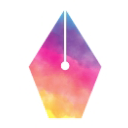This self-study course teaches you how to write more accessible documentation. In this context, accessible means that anyone can read and understand your documentation, including people with disabilities.
Target audience
We've designed this course for anyone who writes text, including:
- Engineers
- Program managers
- Technical writers
The accessibility principles in this course are not only relevant for traditional technical documentation but also for any text, including:
- Design documents
- Code comments
- UI text
- Command-line help
- Error messages
Learning objectives
After completing this course, you will know how to do the following:
- Write and design documents for everyone.
- Write effective alt text for images.
- Use sufficient color contrast for text and images.
- Create accessible diagrams.
- Identify accessibility pitfalls when editing documents.
Learning non-objectives
This course does not teach you everything about accessibility or provide a detailed checklist for making docs accessible. You can find additional resources in the course summary.
Next unit: Design for everyone
